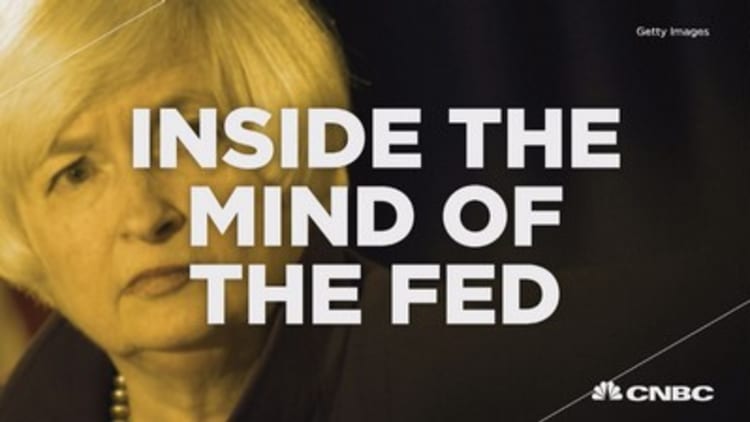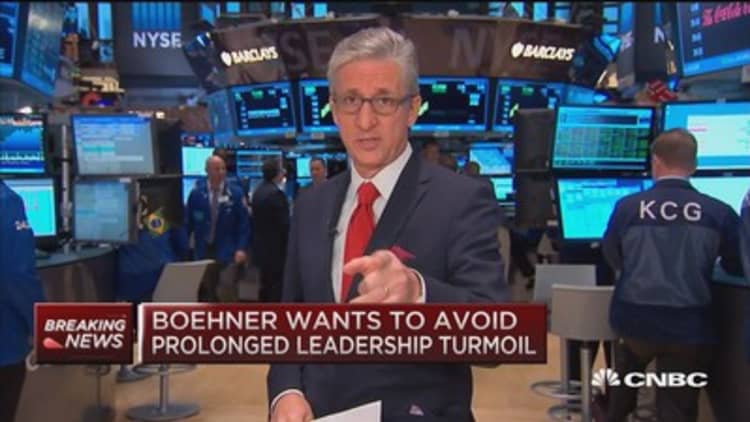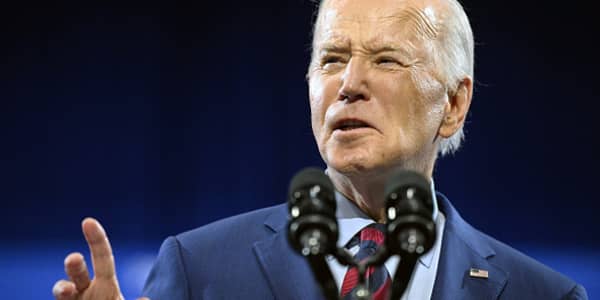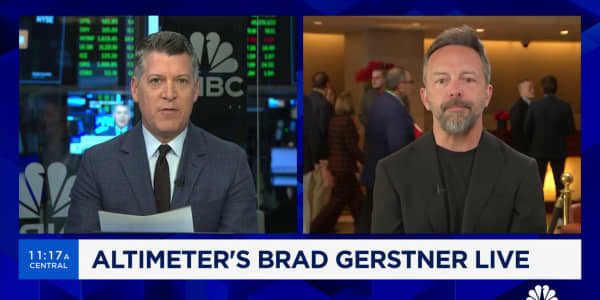


During a speech Thursday in Amherst, Massachusetts, Federal Reserve Chair Janet Yellen sent a message to the financial markets that the U.S. central bank remains on track to raise interest rates before the end of the year.
Just like she did in Cleveland on July 10. And in Providence, Rhode Island, on May 22. And in San Francisco on March 27.
In fact, the Fed leader's remarks that seemed to spark a fairly aggressive stock market rally Friday differed little from her previous speeches, or for that matter multiple statements released after this year's Federal Open Market Committee meetings over which Yellen presides.
What was it, then, that convinced the market that Yellen and the rest of the FOMC are finally serious this time about liftoff from zero rates before 2015 runs out?
It may have been a bit more optimistic tone about the pace of inflation gains.
She did seem more urgent than usual to place the "transitory" label on the factors holding back the inflation and accompanying economic acceleration the Fed so desperately wants to generate in an economy that has seen little. Yellen said FOMC officials "expect that the various headwinds to economic growth ... will continue to fade, thereby boosting the economy's underlying strength."
Read More
She followed that with an assertion that "it will be appropriate to raise" rates "sometime later this year" so long as all the underlying trends she sees hold.
In all, though, Thursday's speech offered not really much different than the standard Fed fare delivered to investors for most of 2015.
There was some chatter in the market that one of the propelling factors for the rally was that Yellen clearly indicated she was one of the 13 FOMC members (out of 18) who favors a rate hike this year.
But could that really ever have been in doubt? Even before taking over in March 2013 as chair, Yellen was famous for her consensus-building skills. To imagine that she was part of a small uber-dovish minority on the board—a lonely leader trying to hold back the hawkish tide—is implausible to say the least.
Instead, it seemed mostly to be her acknowledging that the case for keeping rates at zero has become increasingly wobbly, and she wants investors to know that the Fed at least can see what's happening.
Read MoreFed blowing its chance to raise rates: Economist
That argument for an economy dependent on zero interest rates got even weaker Friday with the Bureau of Economic Analysis revising second-quarter gross domestic product growth up to 3.9 percent (though the third quarter looks significantly less robust, depending on whose estimate you believe).
Also, a favorite bugaboo for Fed officials, the "tightening economic conditions" fear, carries little weight as well. While conditions have tightened marginally in recent weeks, the Chicago Fed's Financial Conditions Index reading is -0.61, with any negative reading indicating loose conditions. A year ago the reading was -0.87; it was -0.68 a month ago.
No, what the Fed is looking for is essentially permission from the markets to go ahead and hike.
Investors, despite Friday's rally, remain skittish.
In the week following the September FOMC statement, traders ditched U.S. equities and jumped to cash. Money market funds saw $17 billion of inflows and another $400 million net into bond funds, while U.S. equities lost $7.3 billion, pretty much all of it solely attributable to more than $7.4 billion getting drained out of the SPDR S&P 500 exchange-traded fund, according to Bank of America Merrill Lynch.
Finally, while the markets may have thought they witnessed a breakthrough from Yellen on Thursday, futures trading made a less resounding statement.
The probability of an October hike remained low Friday, with just an 11 percent chance, while December's likelihood stood at just 35 percent.
Translation: Yellen and the rest of the Fed still have a lot of work to do before convincing the market they're serious about getting monetary policy back to normal.






